When it comes to keeping your trousers up, your big three options are belts, suspenders, or braces and, for the trousers themselves, side adjusters. Nowadays, of course, belts are the most popular option, but how did this come about? Today, we’ll be “belting out” about belts and explaining why men started wearing them in the first place.
Ancient Belts
A “belt” is a band or strap used to support clothing or to carry instruments. Meanwhile, a band or strap worn around the waist and used to keep clothes cinched rather than supported is technically called a “girdle.” This is from the verb “to gird,” meaning “to encircle” – in this case, the waist.
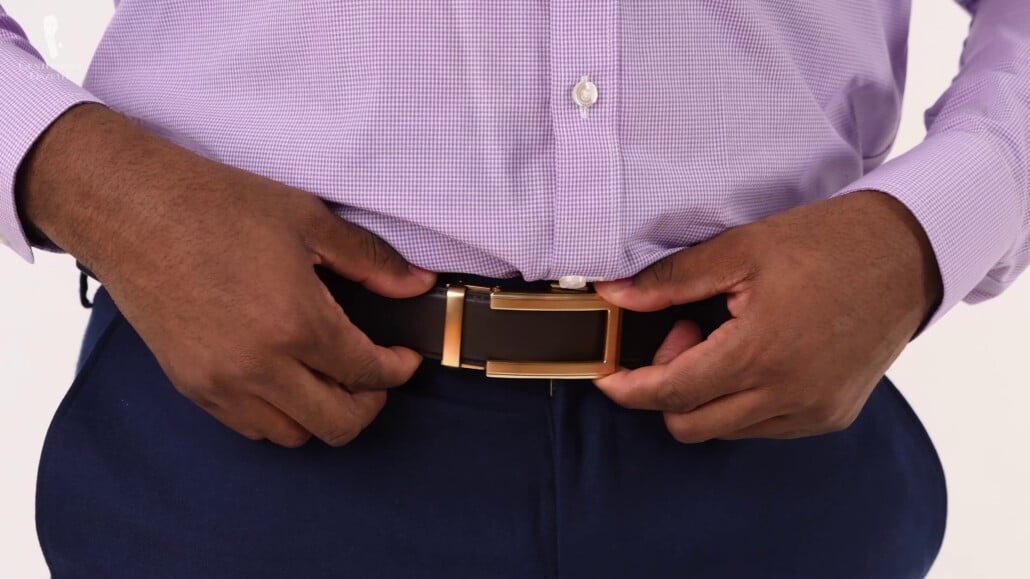
The common expression “to gird one’s loins” refers to the ancient practice of gathering up the hem of a robe and tucking it into a girdle, thereby turning the robe into a loincloth. We should note, though, that this distinction in terminology is largely ignored today, and the term “girdle” usually refers to an undergarment that is used to shape the midsection and thighs.
History of Belts
Speaking historically, belts and girdles were distinct from one another, but they were more similar. So, for more on this, let’s get into our history section. There’s actually quite a bit of archaeological evidence for both of these garments through the Bronze Age, and it’s likely that both of them originated even earlier – as far back as the Stone Age.
In the epics of the Greek poet Homer, written around 1200 B.C., both belts and girdles are mentioned. And both belts and girdles were worn by the ancient Romans; though they’re best remembered today for their military belts like the cingulum.
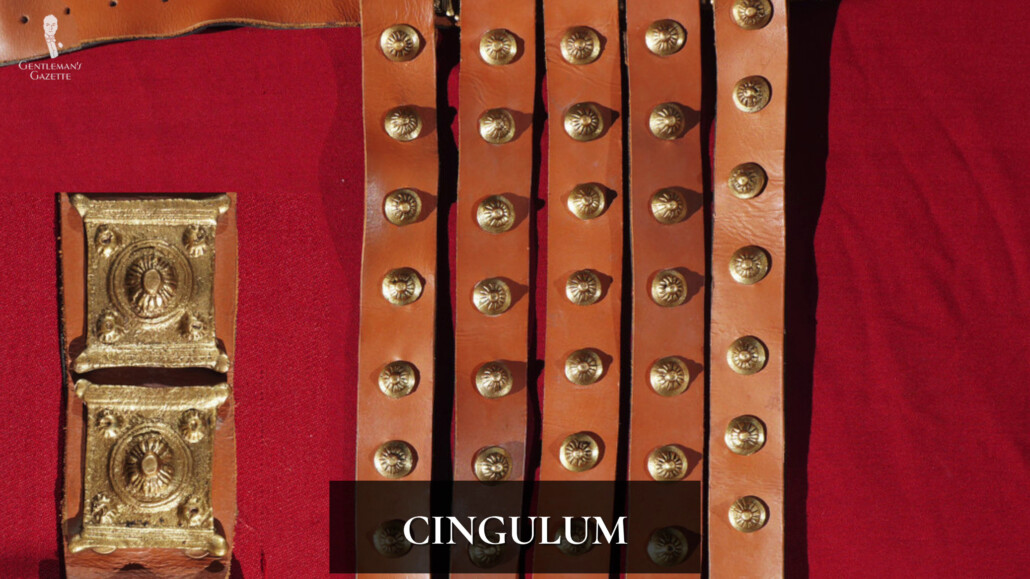
When it comes to belts worn with trousers, the Romans believed that only barbarians like the Celts, Gauls, Germans, and Goths wore trousers. This can be seen on a carving on the Ludovisi sarcophagus dating from around 250 A.D., where a goth warrior is depicted in trousers that are cinched at the waist.
Medieval and Early-Modern Belts
During the European Middle Ages, the blending of multiple cultures resulted in new fashions where both belts and girdles could be worn with trousers, tunics, and robes. Still, as before, belts were mostly associated with utilitarian functions. Knights wore scabbards on their belts, for instance, and belts were also commonly used to hold tools and instruments.
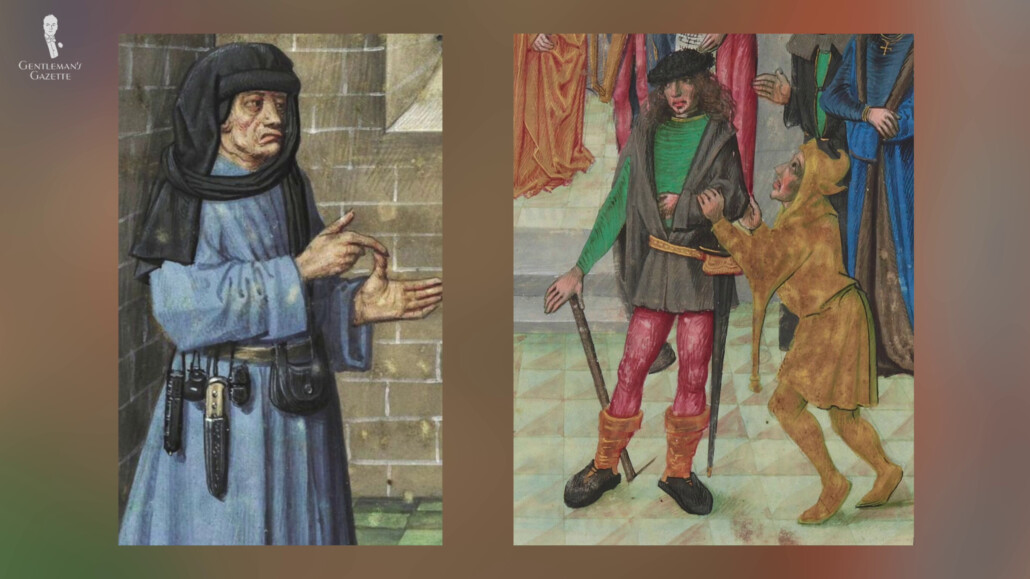
Girdles did appear on fine or luxurious court clothes and for special occasions. As the early modern period progressed, a new type of trouser called “breeches” became more popular.
Because breeches had buttons, buckles, or drawstrings, belts were not required to hold them in place, but belts remained popular as decorative items and status symbols.
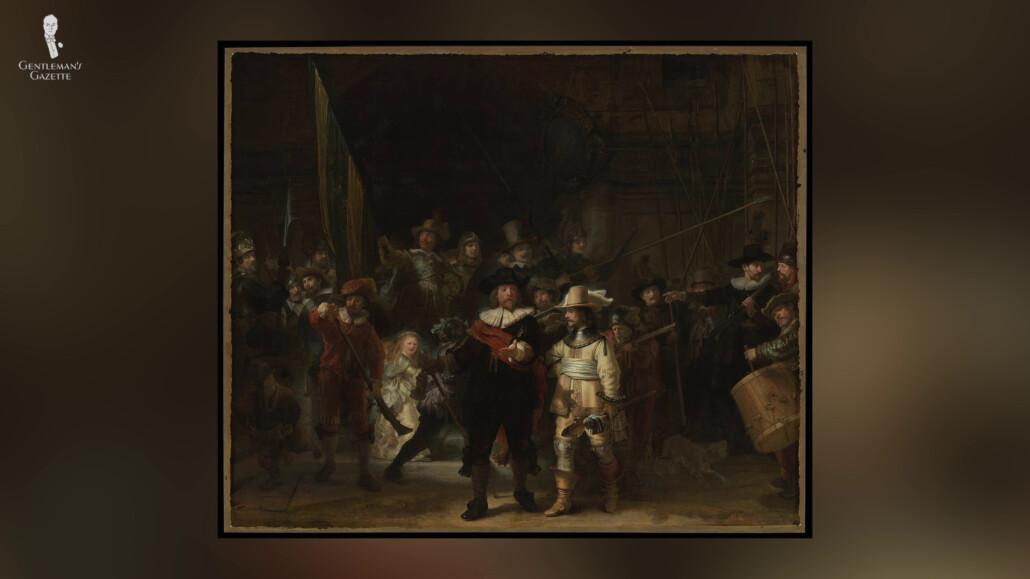
During the 17th and 18th centuries, the sash gained popularity as a waste covering, contributing to the development of the modern cummerbund. So, the belt remained closely associated with utilitarian tasks and the military and wasn’t commonly used for holding the trousers up.
Suspenders Become Supreme
In the early 19th century, London haberdasher Albert Thurston is credited with inventing suspenders, originally called “braces,” as they still are in many regions. Suspenders held the trousers in place by literally suspending them from the shoulders, and they were attached to the waistband by ties or buttons.
They immediately became popular because, at this time, clothing production had entered the Industrial Revolution, and textile mills and factories were churning out some of the first mass-produced clothes.
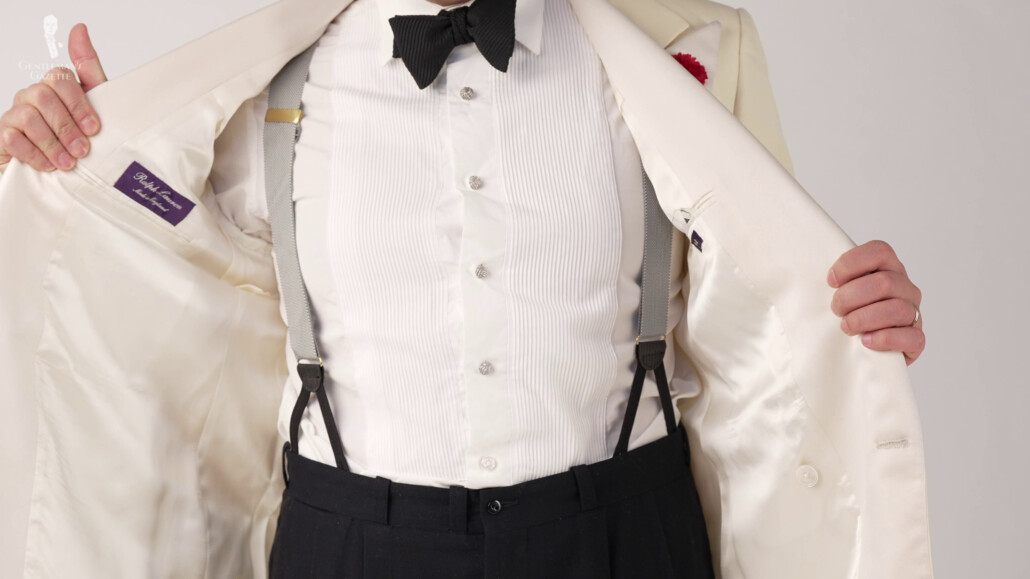
However, most of these garments had little or no sizing variation, meaning that most trousers of the time were essentially one-size-fits-all. So, to make trousers fit in the waist, men either had to have them altered, which could be an expensive proposition, or they had to use various accessories in order to keep oversized trousers up.
Belts can be used to cinch trouser waistbands to size, but if the waist is too large, it can bunch up and appear bulky and awkward. Suspenders help to mitigate this issue better. Even men who could have their clothes altered or, indeed, made bespoke still preferred suspenders at this time because high-waisted trousers had come into fashion, and belts can also look a bit awkward cinched at the natural waist.
For the rest of the 19th and into the 20th Century, then, suspenders stayed supreme, supplanting belts as the primary method of keeping one’s trousers up. However, the belts didn’t disappear. They persisted as a practical accessory, holding tools and equipment, and also became even more closely associated with weapons and the military.
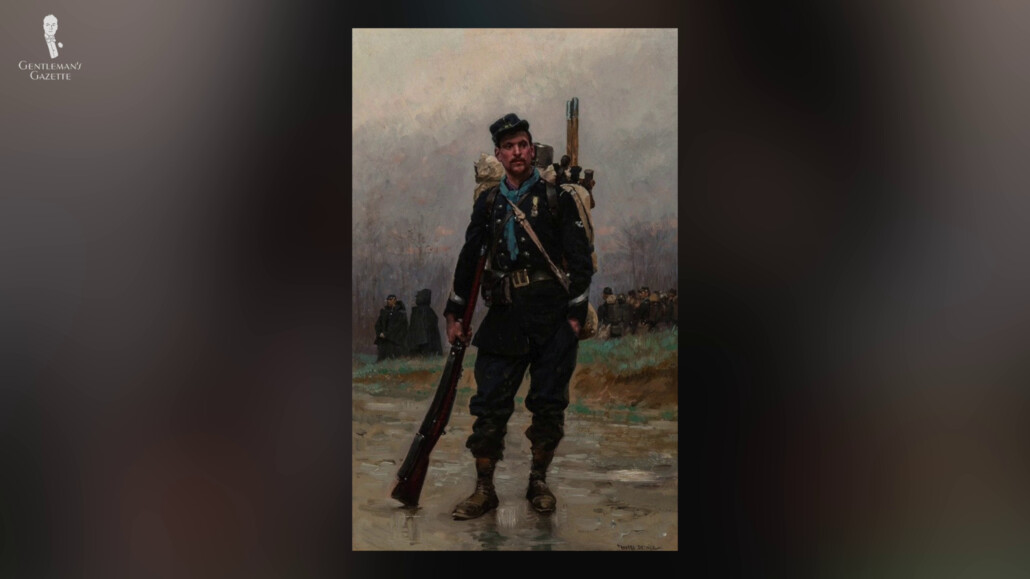
As had already been true in the 17th and 18th Centuries, belts provided ample storage for the various supplies needed for firing early guns. So, then, many soldiers would wear suspenders under their jackets to keep their trousers up and belts over their jackets to hold their weapons and tools. This is probably the only example of when it can be a good thing to break the “no suspenders and belts at the same time” rule.
Indeed, belts became so closely associated with the marshal aesthetic that a tightly cinched waistline was seen as the hallmark of a good soldier. Allegedly, this would lead some officers to wear corsets to be able to cinch their belts in even tighter, which did also lead to the appearance of a broader chest.
This association between belts and manly figures, coupled with the belt’s already long-standing relation to manual labor, connected belts with rugged working-class men, perhaps best typified by the country farmer and the Wild West rancher.
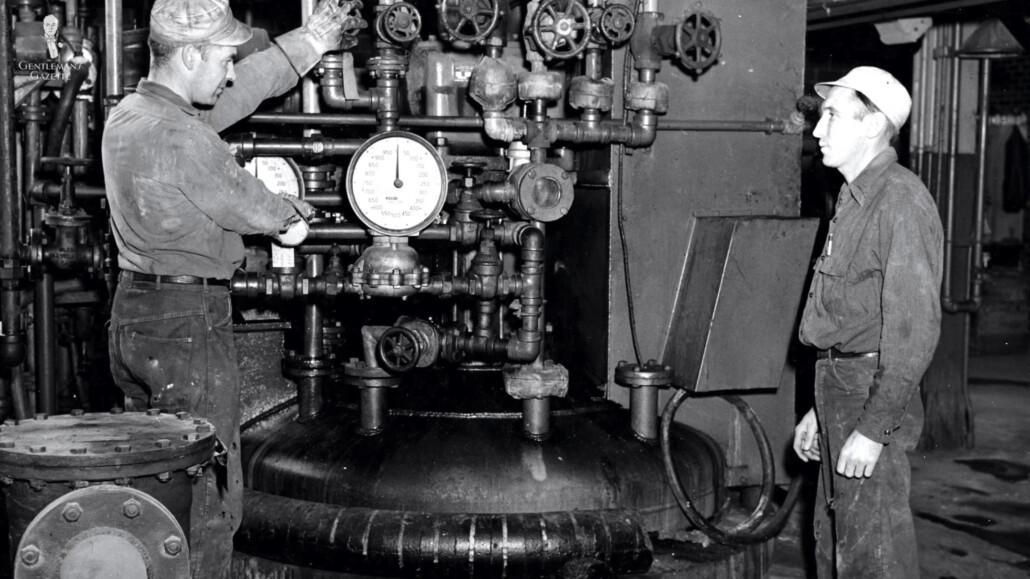
Although, it should be noted that, at this time, even men like these were still mostly wearing suspenders to keep their trousers up and belts to hold their tools and weapons. After all, a trusty gun belt and a tough attitude were vital for survival in the Wild West of the past and the Wild West of “Back to the Future.”
20th Century Ascendancy of Belts
By the early days of the 20th century, though, the mutual wearing of belts and suspenders at the same time began to fall out of favor. Belts, which were easy to take on and off and could, of course, be used to hold tools, were still naturally worn in manual labor settings. Meanwhile, suspenders were still worn at most other times.
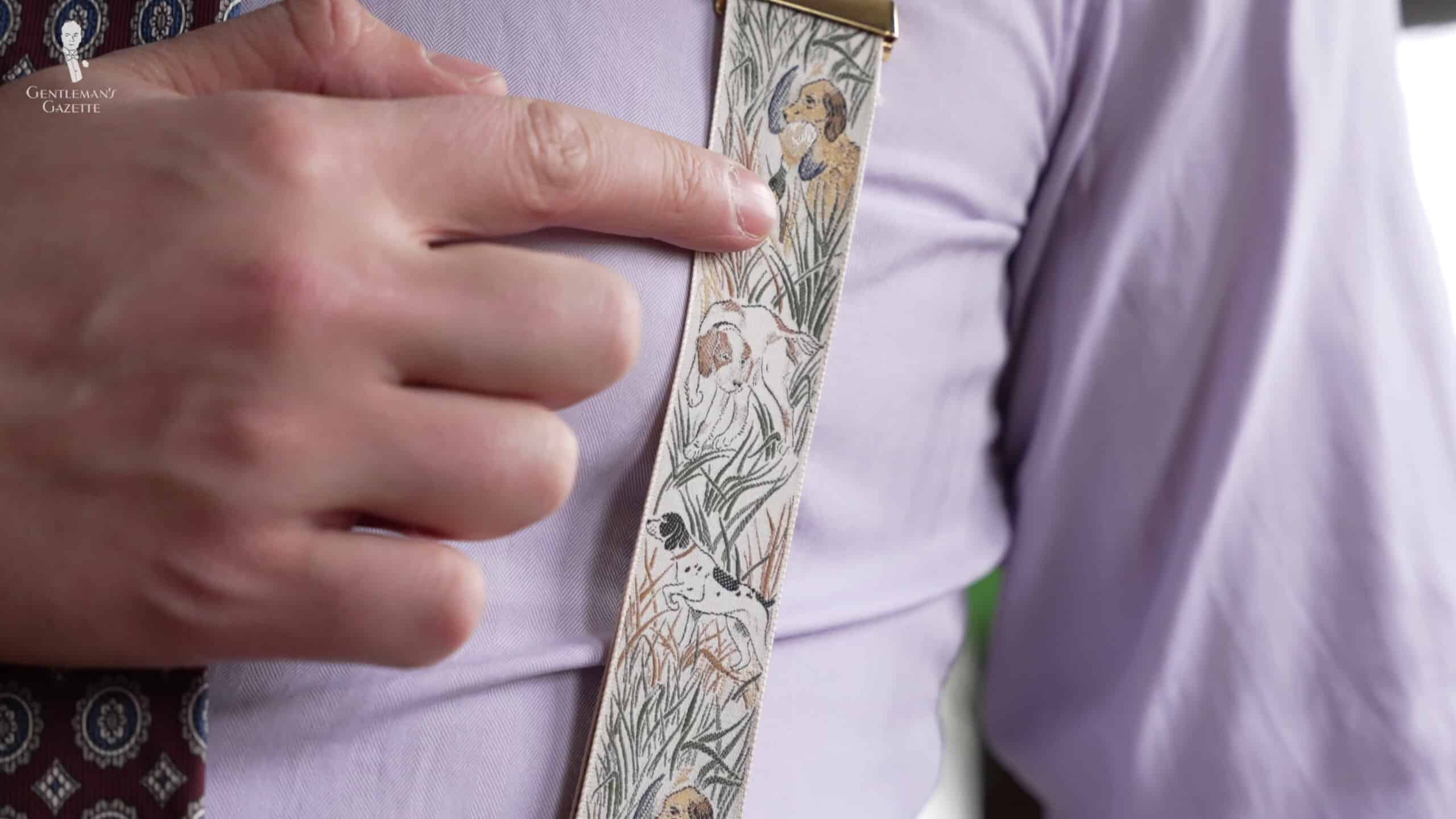
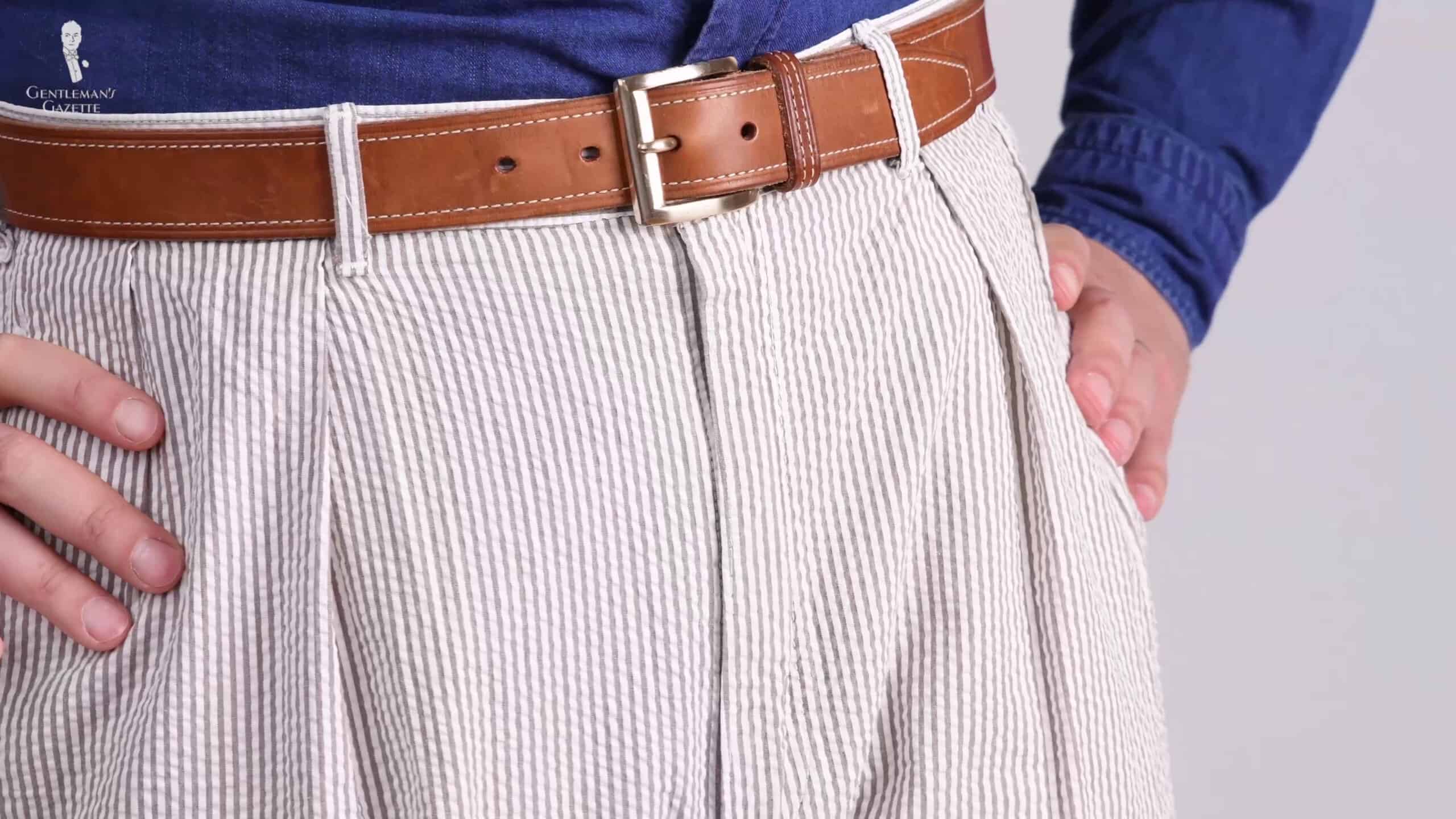
During World War I and in keeping with military tradition, belts were commonly seen on the exteriors of field uniforms. Suspenders remained the preferred way to keep one’s trousers up for most European armies, but the Americans began to favor belts for this purpose as well.
Between the World Wars, the increasing association between belts and manual labor saw Levi Strauss include belt loops on their lines of trousers in 1922. And by 1937, they had taken out the suspender buttons. During this time, belts were also creeping into more dress codes in classic menswear, but suspenders remained popular, especially for more formal occasions.
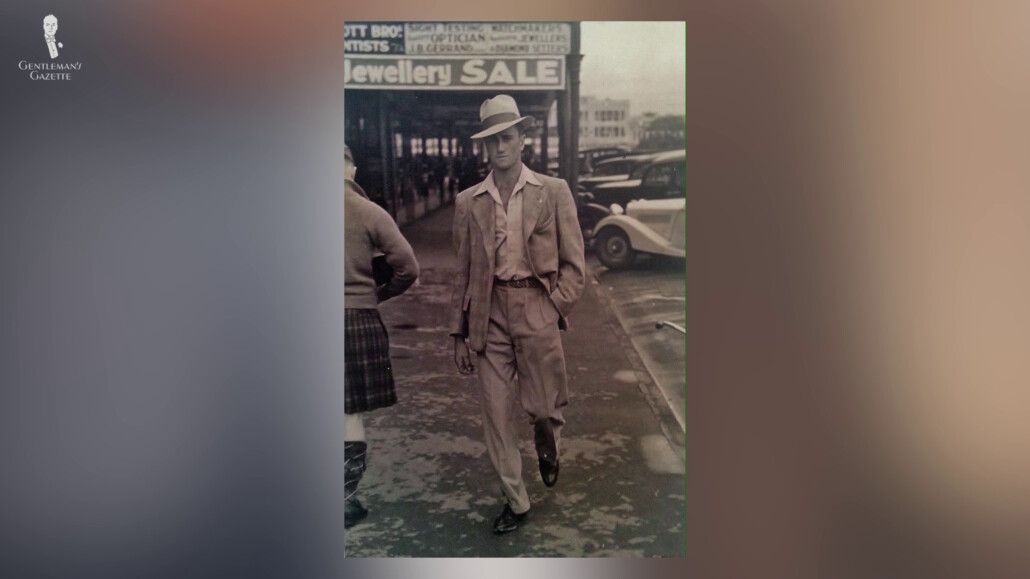
During World War II, suspenders would be issued to troops, but belts would prove more practical on the battlefield. And by the end of the 1940s, belts had cemented their position as the number one trouser accessory for men.
Why Men Started Wearing Belts
So, as we hope we’ve made clear, the reasons men started wearing belts overall were to hold weapons or tools and also to provide a more flattering silhouette for loose-fitting garments. But, to answer the more specific question that we’re really getting at today, which is to say: why did men start wearing belts instead of suspenders to keep their trousers up in everyday wear?
We’ve identified four main reasons. First, though, let’s do a bit of myth-busting. It’s a common misconception that soldiers returning from World War II had grown so accustomed to their military-issued belts that they stopped wearing suspenders once they got home. However, as we’ve already shown, belts had been worn already with military uniforms during the 19th century and into World War I, and that hadn’t spelled the decline of suspenders.
Myth: Soldiers had grown accustomed to their military-issued belts that they stopped wearing suspenders.
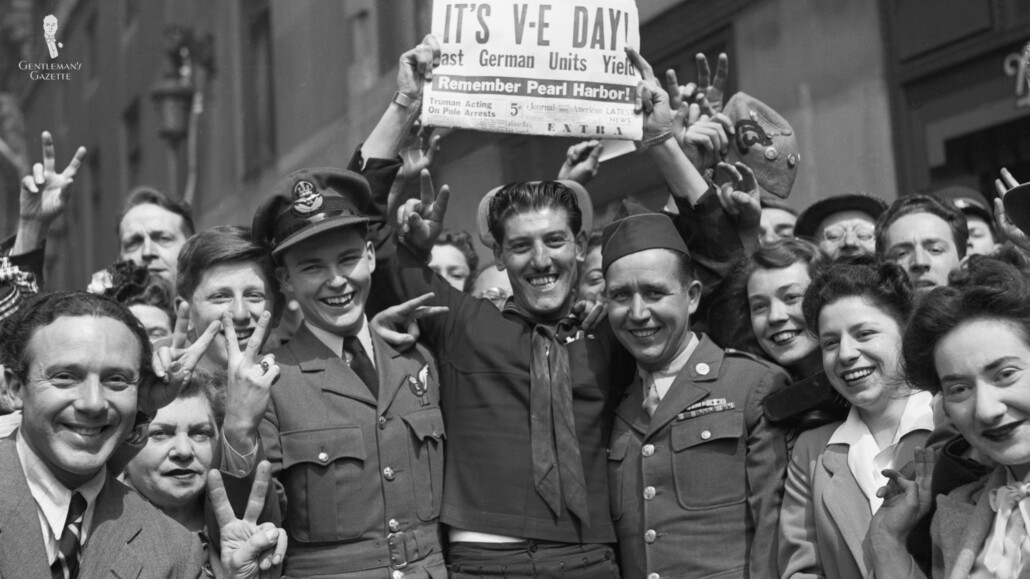
That being said, veterans’ experiences during World War II did contribute at least somewhat to the increasing popularity of belts as everyday wear in the mid-20th century, along with the four main reasons that we’ll get into now.
1. Casualization of Clothing
By the second half of the 20th century, suspenders were considered a more formal accessory, and belts were considered more casual. As menswear, overall, became more casual – a topic that we’ve discussed regularly on the website – belts became more popular and more associated with trends.
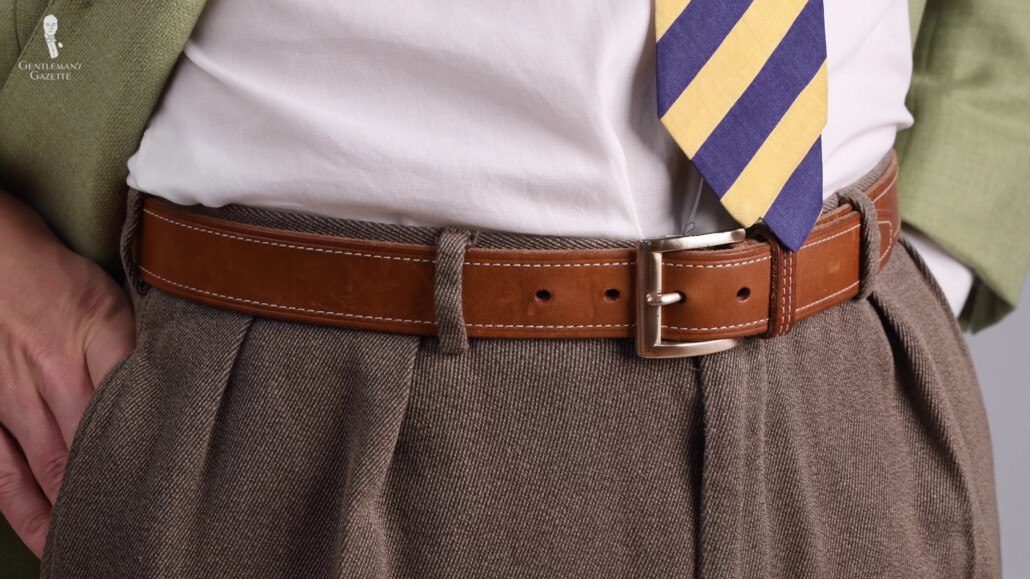
So, it should be no surprise that most of the clothing movements we mentioned in our 1950s and 1960s fashion guides include belts like the greaser bike belt, the hippie tooled belt, and the beatnik or mod skinny belt. Unique belt styles like woven belts or unusual buckles also provided more opportunities for individual expression.
2. Manufacturers’ Choices
As we mentioned earlier with Levi’s, by the mid-20th century, many casual trouser makers had decided to forego suspender buttons in their trousers in favor of belt loops.
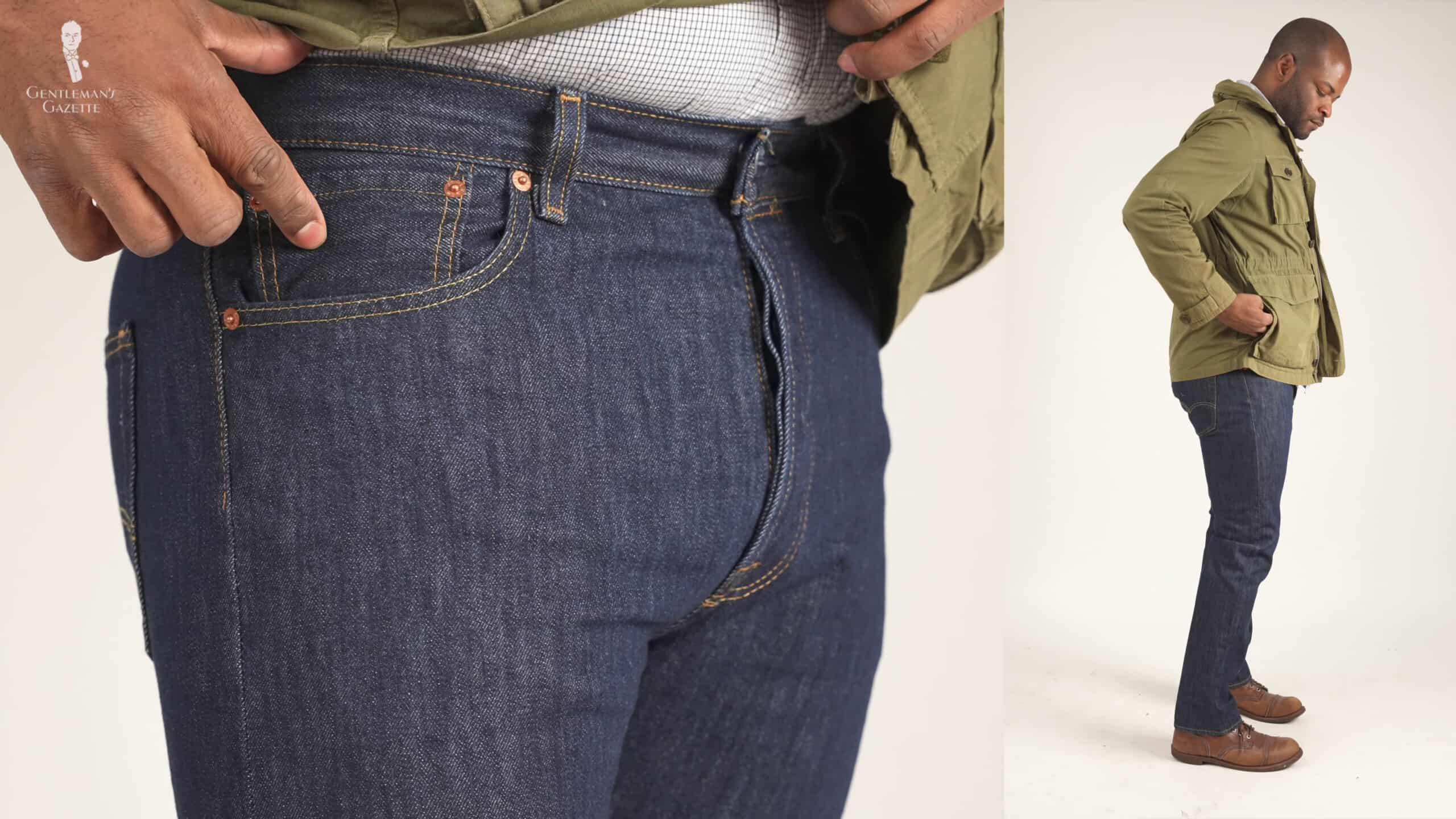
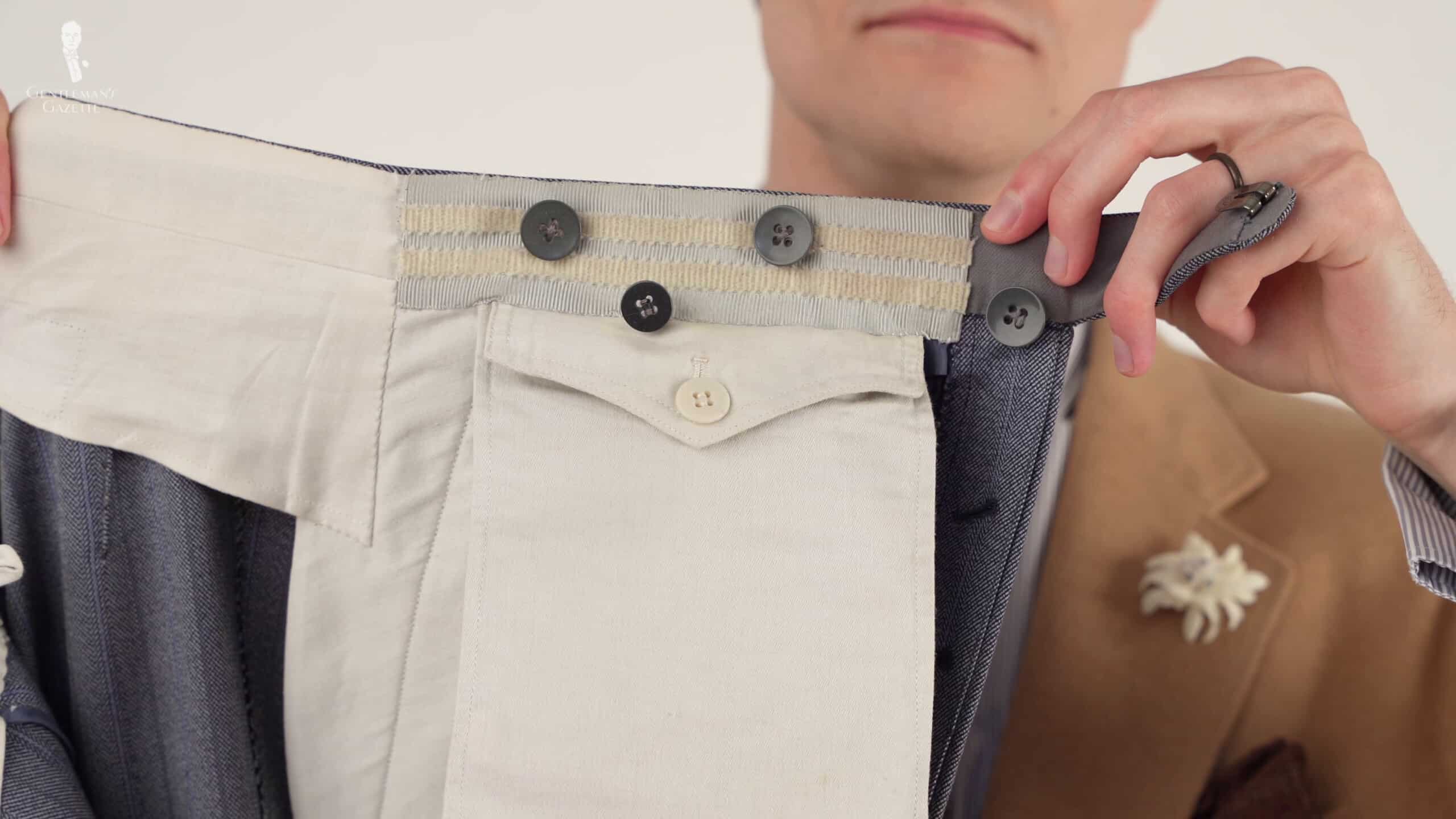
As men wore more trousers of casual styles, they were discouraged from wearing suspenders as they would have to add in the suspender buttons themselves. This, then, created a self-perpetuating cycle where more customers seem to favor casual trousers with belt loops. Thus, manufacturers would make more trousers with belt loops. Thus, customers would favor them more and so on.
3. Perceived Convenience
Belts were already favored for manual tasks because they were handy and easy to take on and off. As many men were already wearing belts for tasks like these, it made sense to start wearing belts on more occasions and wear belts more often rather than having to maintain separate collections of both belts and suspenders.
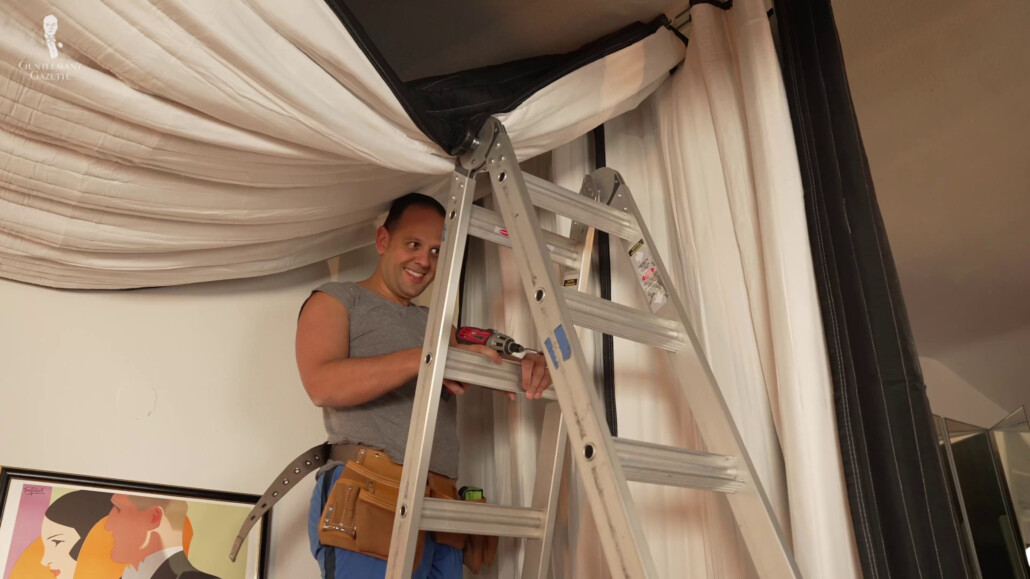
4. Popular Perception
Perhaps because of the belt’s association with the military and with rugged men in general, it’s fair to say that by the mid-20th century, belts were simply considered cool. Both real-life and big-screen heroes from World War II were closely associated with belts, as were the cowboys who proliferated on both TV and the silver screen. Outside of his formal ensembles, James Bond wore belts, as did popular and famous entertainers. Essentially then, belts were simply what attractive, active men wore.
So much so that, in the 1967 Japanese Yakuza film “A Cult is my Passport,” the star of the film, Joe Shishido, pairs a belt with his waistcoat.
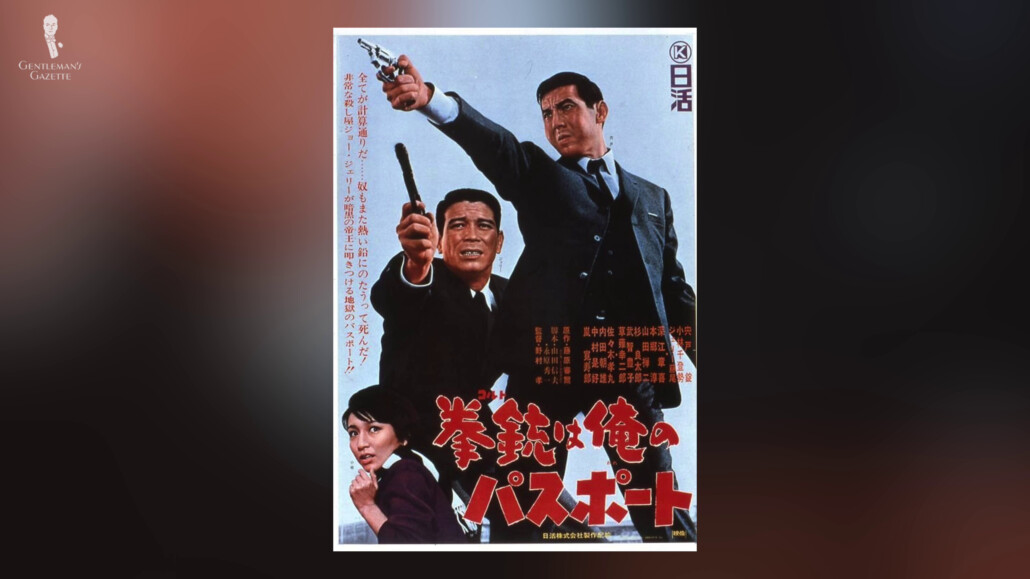
This, of course, is a fashion faux pas that is mocked through song in the 1964 film “Robin and the Seven Hoods.” Even though Frank Sinatra, himself, does the same thing.
So, belts and waistcoats might not have mixed in the Golden Age of Menswear, but by the 1960s, belts were the preferred accessory of the modern, masculine, mighty man.
These factors were only exacerbated as time went on and, with the exception of a few periods like the suspender craze of the late 80s and early 90s, belts have remained the preferred trouser accessory for men today.
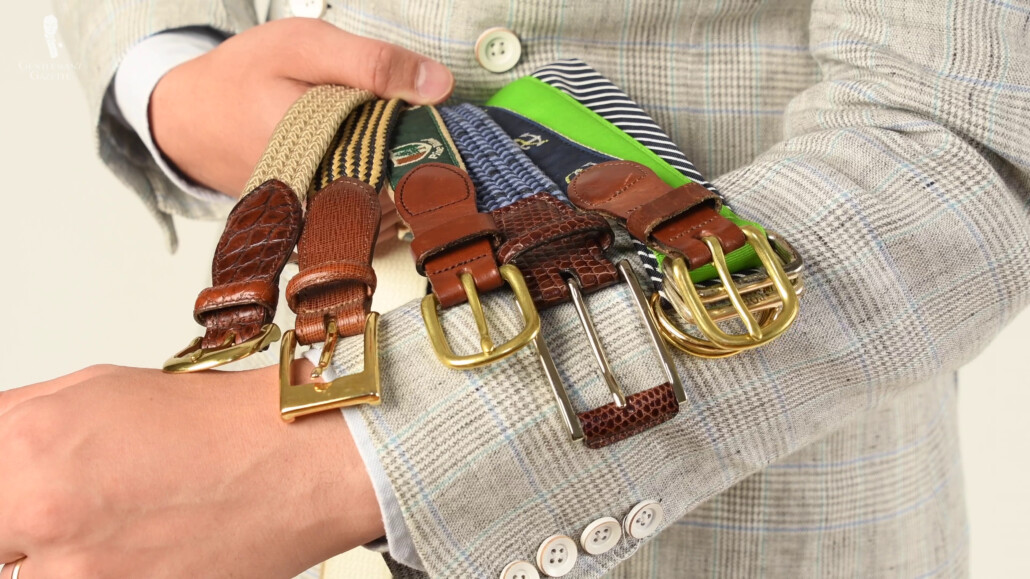
So, having worked our way through over 5,000 years of history, we can now summarize definitively why belts are so popular with men today with another list of four items.
Why Do Men Wear Belts in the 21st Century?
1. Utility
The first of these is utility. In other words, belts had a particular ascendancy because they’re just so useful. Historically, they could hold pouches, scabbards, holsters, and tools in addition to their vital role of keeping one’s trousers up.
Belts continue to keep trousers up to this day, of course, and they continue to function as a convenient conveyance, toting phone clips, wallet chains, belt bags, pouches, and more. Granted, this isn’t the most stylish look, and it’s not appropriate for more formal occasions. But, as Dwight Schrute would say, “true utility rarely is.”
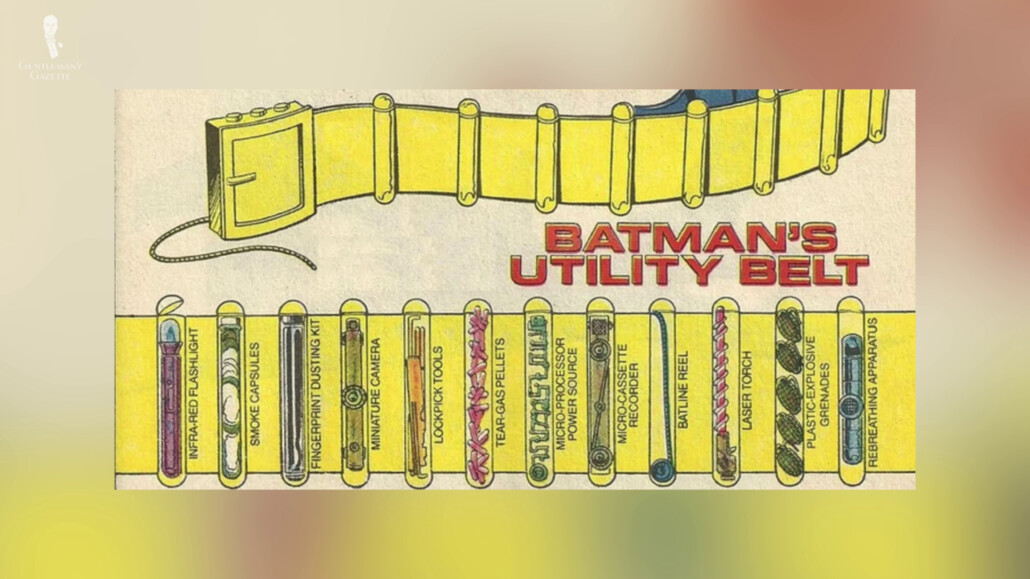
Of course, our favorite example of modern belt utility is exemplified by Batman’s utility belt. Through the years, it’s held tools as diverse as batarangs, a cryptographic sequencer, gas pellets, and a rebreather.
2. Comfort
The primacy of belts over suspenders can largely be attributed to the perception that belts are not only more useful, but also more comfortable. Many men simply don’t like wearing suspenders because they can sit uncomfortably on the shoulder and wrinkle your shirt front.
Belts, meanwhile, rest more comfortably on the waist when they’re properly sized and they’re easier to readjust on the fly. After all, all you have to do is simply unbuckle and slide the prong into one of the multiple holes rather than having to separately adjust two different slides on a pair of suspenders.
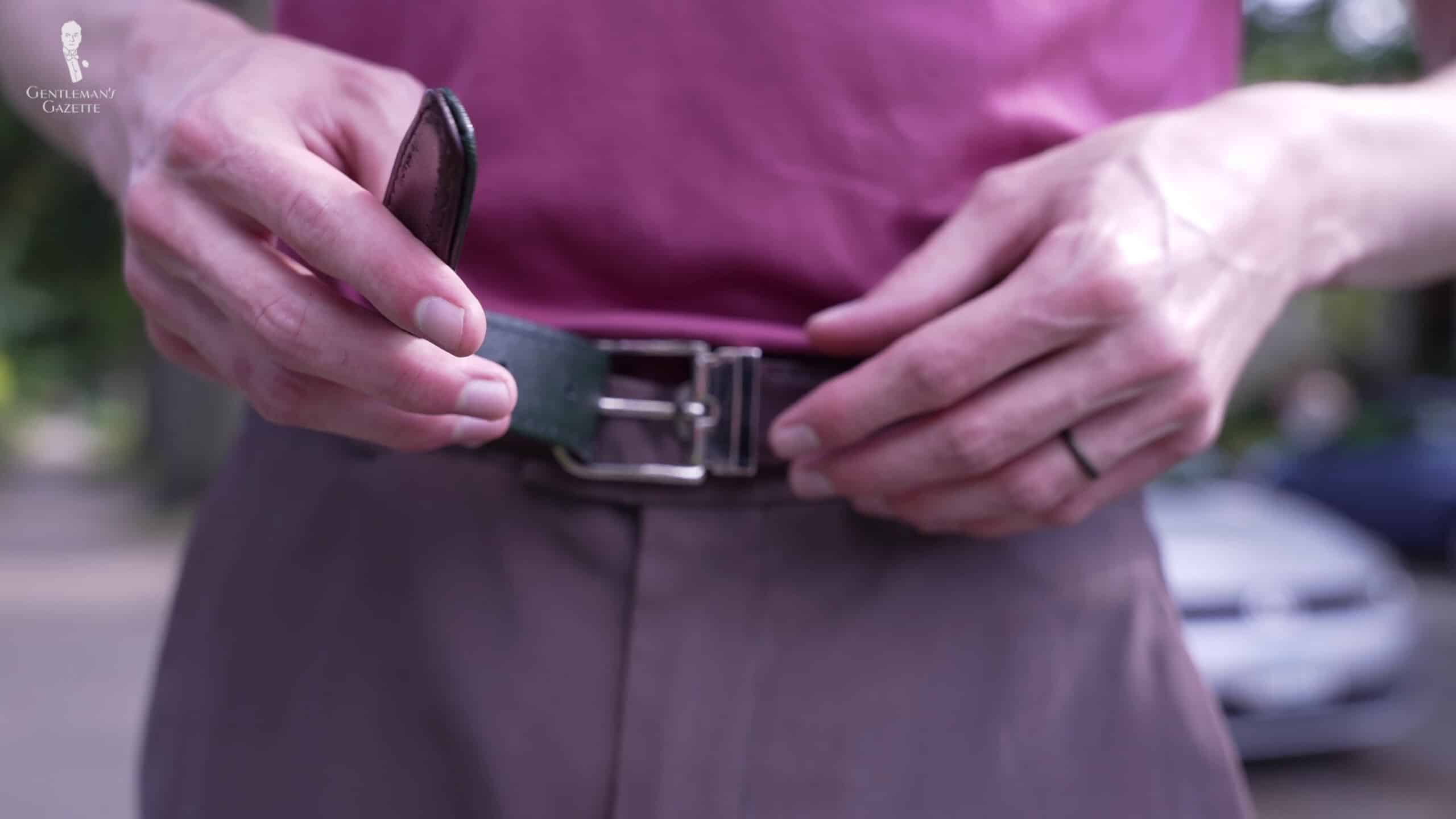
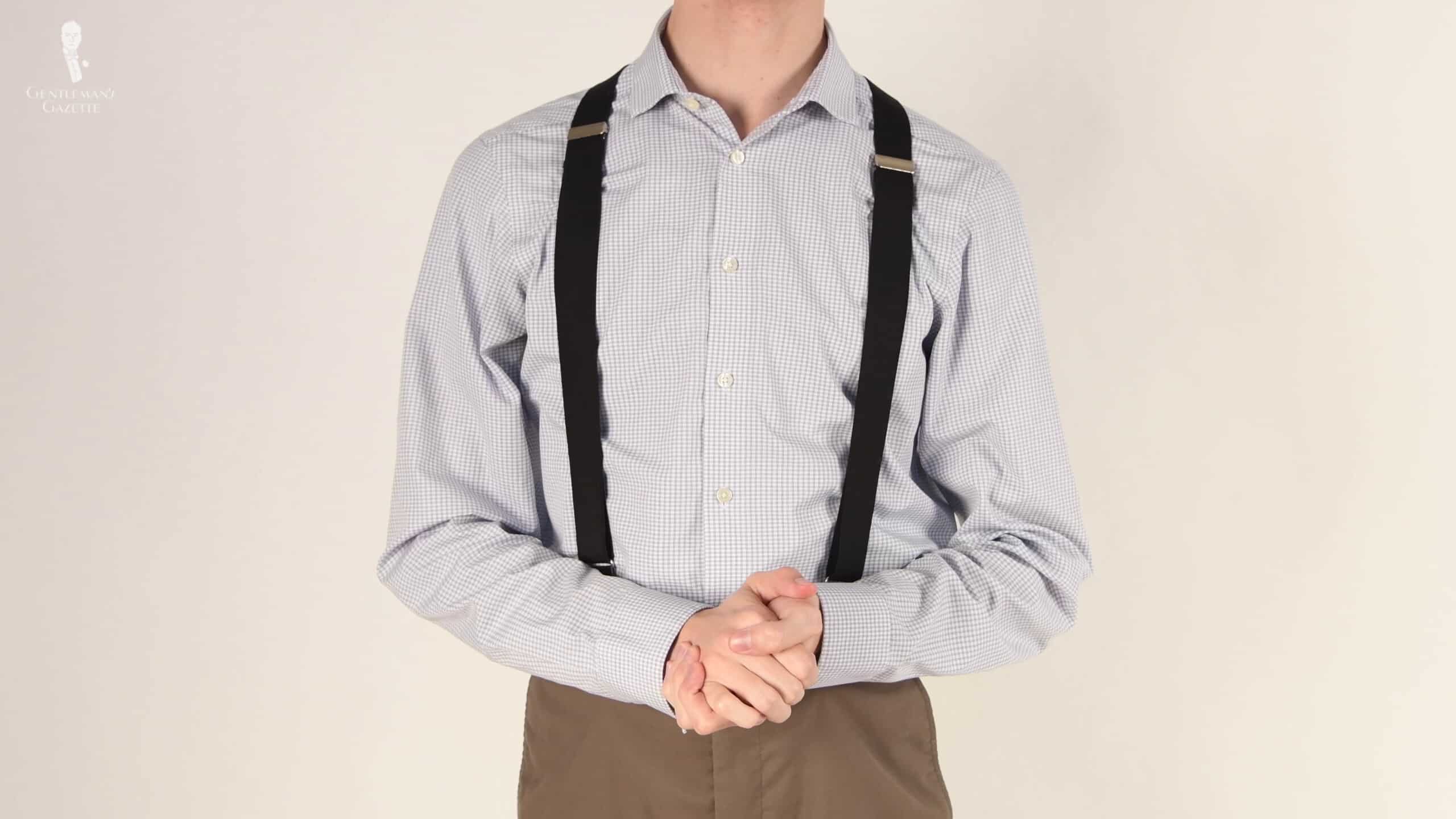
Granted, your mileage may vary on whether you find belts or suspenders to be more comfortable. I, for example, have rotated hips due to cerebral palsy and, as such, belts can sometimes sit uncomfortably on my waist. I tend to find suspenders more comfortable in a variety of situations.
Robot or Elf? Get to Know Preston Schlueter!
3. Display of Wealth
You don’t have to be a billionaire, playboy, and vigilante to see the benefits of belts as a means to flaunt your wealth or to store all of your batarangs for that matter. While suspenders are usually obscured by your jacket or waistcoat, a belt is fairly easy to see whenever your jacket is unbuttoned. Therefore, belts are much easier to show off.
If, for instance, you really want to emphasize the way that your rich, calfskin belt really highlights your whole-cut Oxfords or display the expensive materials from which your belt is made like exotic alligator leather or a blinged-out belt buckle, a belt is going to be your best option. This is especially true if you want the branding of the belt to be the center of attention.
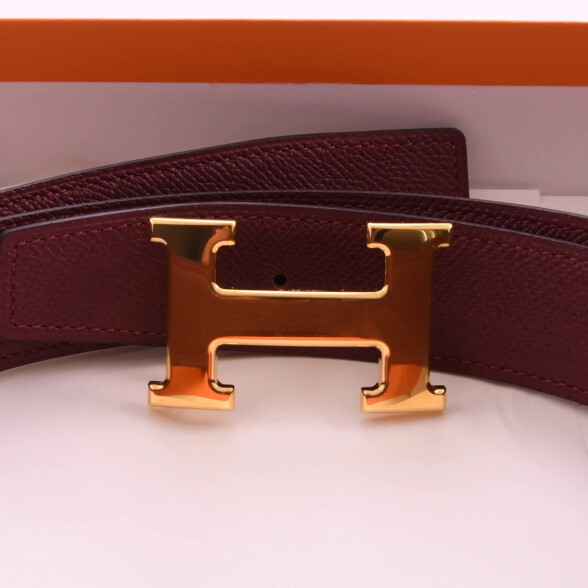
Belts are much easier to show off, compared to suspenders.
By the way, if you would like to find out whether or not that little H on an Hermes belt is really worth $800, you can find out in our Is It Worth It? review.
Suspenders can also be made from luxurious materials with precious metal hardware, of course, but, most of the time, it’s going to be fairly difficult for those around you to see this, depending on your line of work, of course.
Which leather is best for each accessory type?
4. Style
Belts offer many stylistic options that can differ from suspenders and can make them a better choice with certain outfits. Belts create visual interest in your midsection, which can help your look overall to appear more balanced.
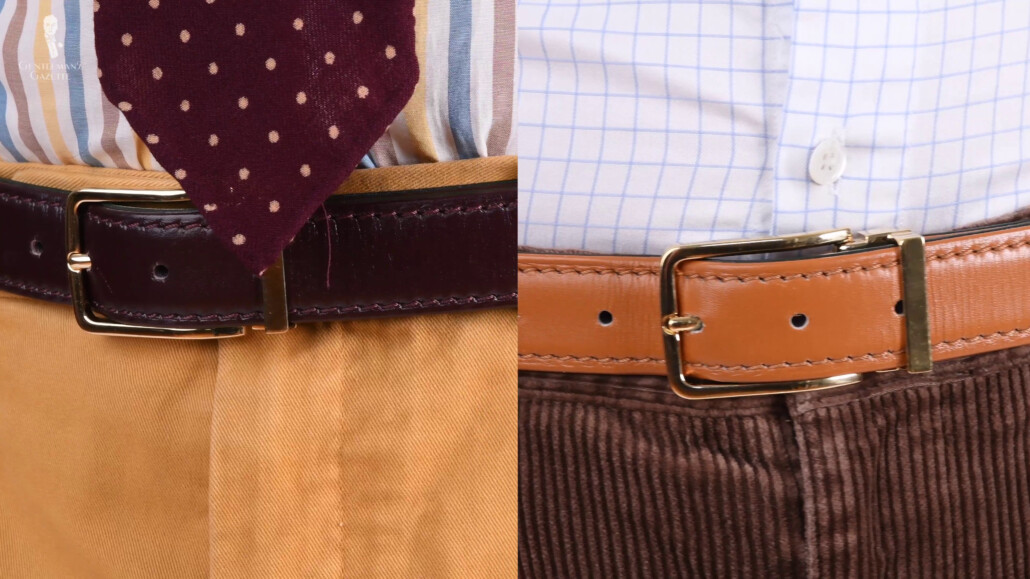
Belts can also make you appear slimmer at the waist, creating a pleasing inverted v-silhouette and giving you a more trim look.
Conclusion
Belts also afford more opportunities to incorporate unique textures from quality leathers and a metallic luster from belt buckles to enliven your whole ensemble. There are so many different styles and designs for belts that you should be able to find good options for all of your potential outfits.
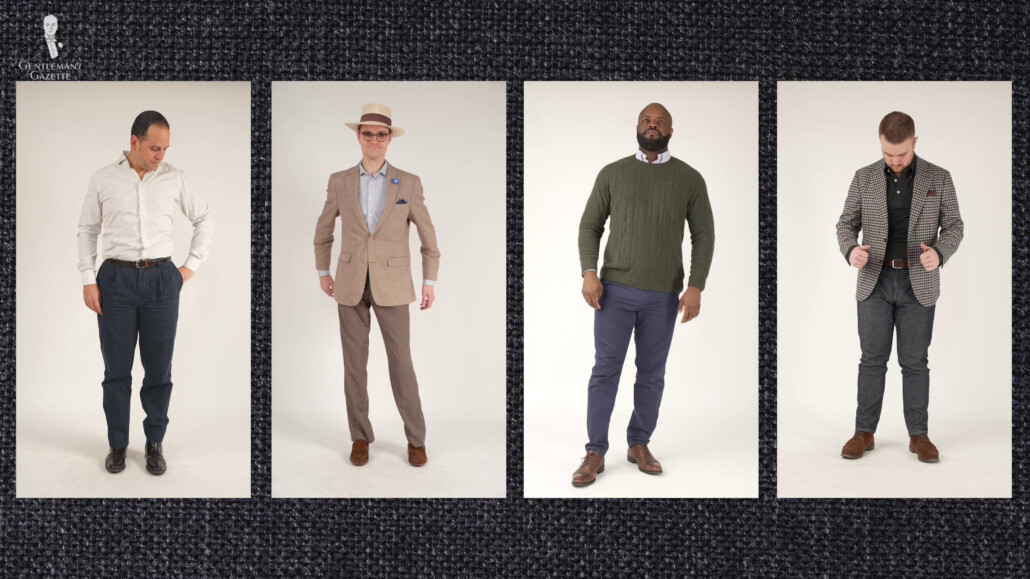
Men who are into dressing well know that a belt is a versatile styling option and is definitely a good tool to have in your sartorial tool belt. We hope that today’s post has explained why men started wearing belts and why they remain so popular to this day.
Let us know in the comments below, are you a “belt booster” or a “suspender stan”?
Outfit Rundown
Today, I am, of course, wearing a belt, and it comes from our modular belt system from Fort Belvedere. The belt itself is an aniline-dyed calfskin leather in a reddish color that we’re calling Bordeaux burgundy. Meanwhile, the buckle is in a slightly rounded design we call the Jasper. It’s made from brass, but its silver color comes from its thick and robust palladium plating.
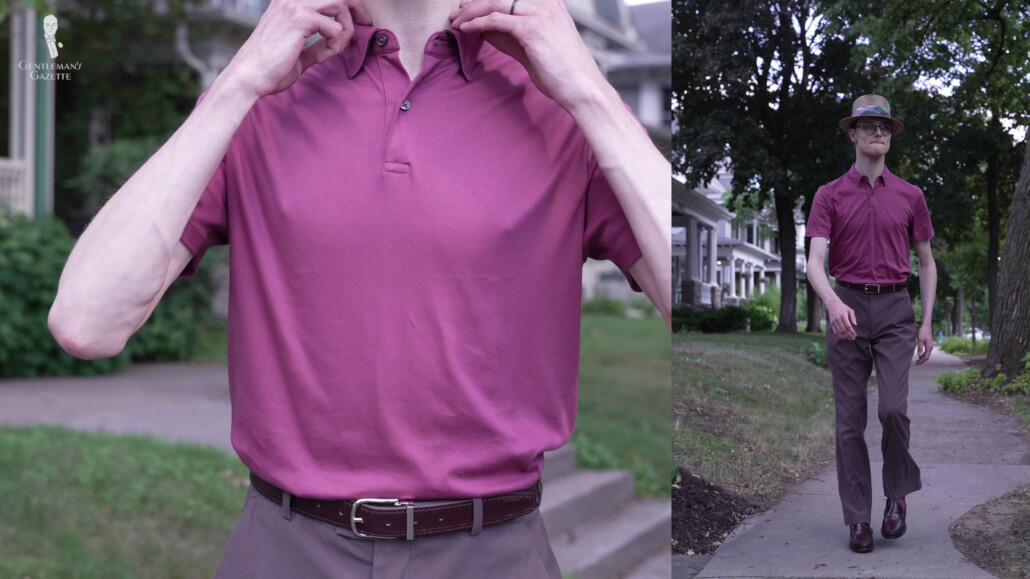
To harmonize directly with this belt, I’ve chosen to wear my dark oxblood penny loafers from Allen Edmonds, and these contribute to the overall casual and sporty feel of my outfit, which also incorporates other red and brown tones.
My polo shirt from Charles Tyrwhitt is in a soft red color, and my pants are in a plain brown color that does feature a red undertone as well. Meanwhile, my two-toned, shadow-striped socks are also from Fort Belvedere in tones of burgundy and light gray.
Because this outfit is so casual, I’ve also elected to leave the product out of my hair. I’m also wearing my trusty coconut straw pork pie hat with a colorful hat band.
And, of course, you can find the Fort Belvedere accessories I’m wearing, including the socks and the elements of the modular belt system, which also comes in a variety of other designs, by taking a look in the Fort Belvedere shop.
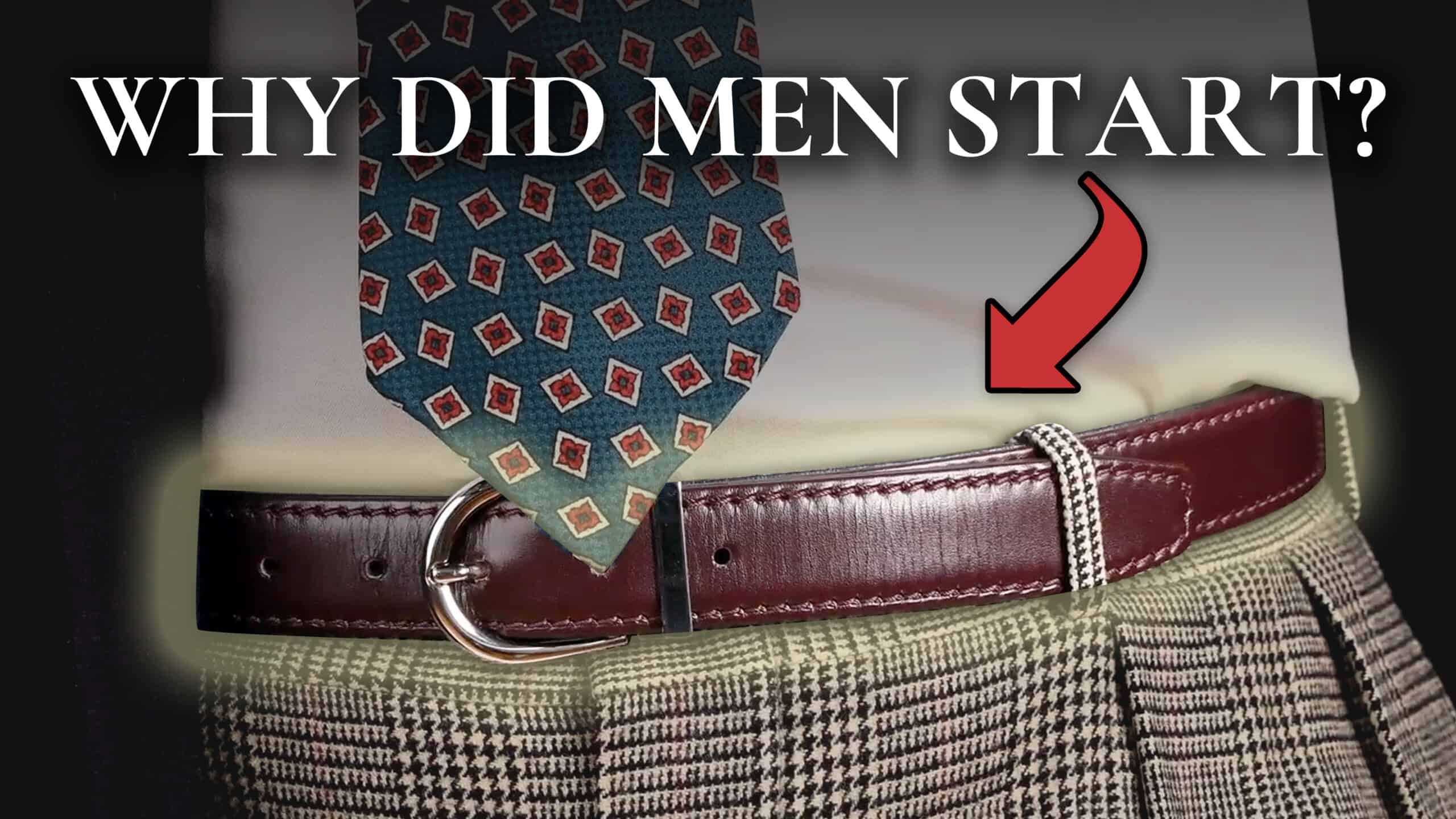

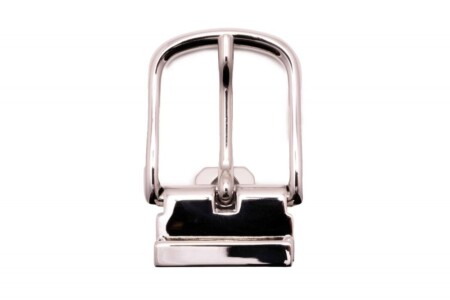
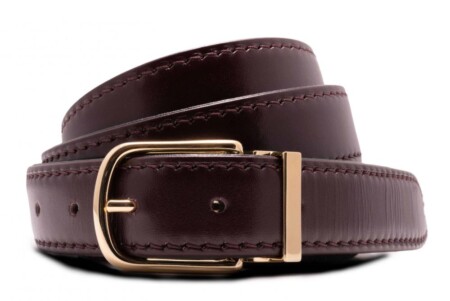
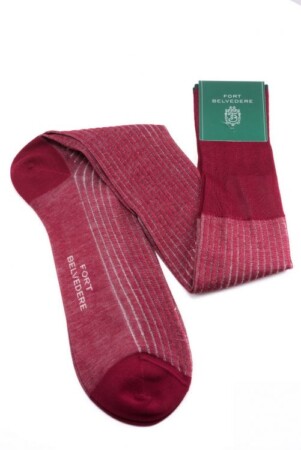
I never heard of belts being “cool.”
People who complain about braces are odd. Braces are comfortable and let your trousers drape properly. (I am referring to the type of braces that you have buttons in trousers.)
Belts cause your pants to droop thus you are constantly pulling them up.
I wouldn’t have said your belts cause your pants to droop so much as they can make the waists bunch, especially if the trousers are a bit big or baggy in the waist to begin with. That goes doubly if the belt notches have worn out as they’re prone to.
“I wouldn’t have said your belts cause your pants to droop so much as they can make the waists bunch, especially if the trousers are a bit big or baggy in the waist to begin with.”
Not the issue. My hips are slim. When I wear a belt, I am constantly pulling them up to my waist. When I wear braces, this problem is gone.
Suspenders are not uncomfortable unless you have some irritation of the skin in your shoulders (from sunburn, say). But they do make using the toilet more difficult, especially when you have to drop a deuce.
I don’t much care for the look of belts, and I find that they don’t work very well unless the trousers are very well-fitted in the waist anyway. For high-waisted trousers, of course, they don’t work at all. Most of my dress trousers have side adjusters.
If one has sensory issues then suspenders or braces might be perceived as uncomfortable due to pressure on shoulders. I’ve known of people who find things like the elastic on socks or tags on sweaters or collars on shirts (or even stiffness if shirts compared with t-shirts) to be irritating due to sensory issues so why not suspenders/braces? I see your point about belts on poorly fitted trousers and personality don’t like the way they can caused the waists to bunch or even create muffin tops with the fabric spilling over the top. As accessories, though, I like belts as they can make an outfit. A leather braided belt gives off more of a relaxed vibe, which evokes images in my mind of someone on a day off. Similarly, a canvas or webbing belt (especially in different colours) has the same effect to my eyes. Whereas a well polished leather dress belt like one would wear with a suit carries connotations of power and authority. Or at the very least, someone who’s very confident in themselves and where they’re headed in life.
I definitely prefer the braces over the belt. The belt just adds weight to my trousers and pulls them down as my hips are narrow.
I‘ve worn trousers with belts, suspenders, braces and side adjusters. Each have their pros and cons in everyday usage. For me, 50% of the time I’m wearing a belt, 15% suspenders/braces and 35% adjustable waist pants. Wearing a belt is not necessarily a preference, but rather due to the number of trousers I own with belt loops.
Also, please keep the videos informative and to the point. The attempt at comedy is not working for me.
“Also, please keep the videos informative and to the point. The attempt at comedy is not working for me.”
Excellent comment.